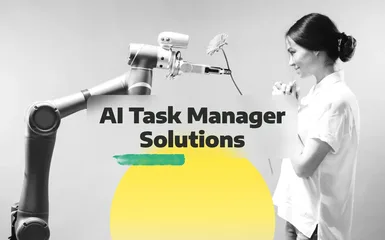
Workflow optimization is crucial for any SME looking to improve their productivity, efficiency, and, ultimately, their bottom line. It can help save time and resources, leading to increased profitability and business growth.
In this step-by-step guide, we'll take a comprehensive look at workflow optimization for SMEs. From identifying bottlenecks and analyzing workflows to implementing workflow automation and continuously optimizing, we'll provide you with actionable strategies and tips to optimize your project management and take your business to the next level.
What is workflow optimization?
Workflow optimization is the process of analyzing and improving the steps involved in completing a particular task or process within an organization. It consists in identifying inefficiencies, redundancies, and unnecessary steps in the workflow and making changes to improve the process.
The goal of workflow optimization is to create a more efficient and streamlined process, which can help reduce operational costs, increase productivity, and improve the quality of work. It may involve changing the sequence of steps, automating specific tasks, or eliminating unnecessary steps.
You can apply workflow optimization to a wide range of business processes, such as:
- Manufacturing
- Customer onboarding
- Customer service
- Opportunity leads management
- Onboarding new employees
- Marketing campaign management
- IT development
- Data collection
- Inventory management
- Administrative tasks
By optimizing workflows, organizations can achieve better results and enhance profitability.
Why do you need workflow optimization?
Benefits of workflow optimization include:
- Increased efficiency: Optimizing your workflows can help you streamline your processes, eliminate redundant steps, and reduce task completion time. It can lead to increased productivity and efficiency in your operations.
- Improved quality: By optimizing your project management workflows, you can complete all necessary steps in the correct order without overlooking or missing a thing. It can improve the quality of your products or services, which can help you maintain a competitive edge in your industry.
- Better customer relationships: Optimizing workflows can reduce product or service delivery time. It can boost customer satisfaction, as customers appreciate quick turnaround times and efficient service.
- Reduced costs: Workflow optimization helps you identify areas where you spend too much time or money and make adjustments to minimize those costs. It can help you improve your bottom line and increase profitability.
Workflow optimization is essential for organizations of all sizes and types, as it can help achieve better results.
A step-by-step guide to workflow optimization
So how do you create efficient workflows? Proper implementation of workflow optimization involves the following steps:
1. Analyze your current workflow
The most crucial aspect of your workflow optimization strategy is analyzing your current workflows. Here's how to do it:
- Evaluate the current procedures or discuss them with the team members who know the most about them. Compile all of the stages into a thorough, sequential list.
- Visualize the current process by using workflow mapping. It involves creating a visual workflow diagram, including each step and its relation. This workflow optimization technique can help you identify bottlenecks, redundancies, and other areas for optimization.
- Analyze each step to determine if it is necessary, efficient, and effective. Look for bottlenecks, redundancies, and areas where work may be delayed or stalled.
- Identify which steps are working well and which ones are not. Determine the elements of your existing workflow generating the highest number of errors or inefficiencies.
2. Choose your workflow optimization software
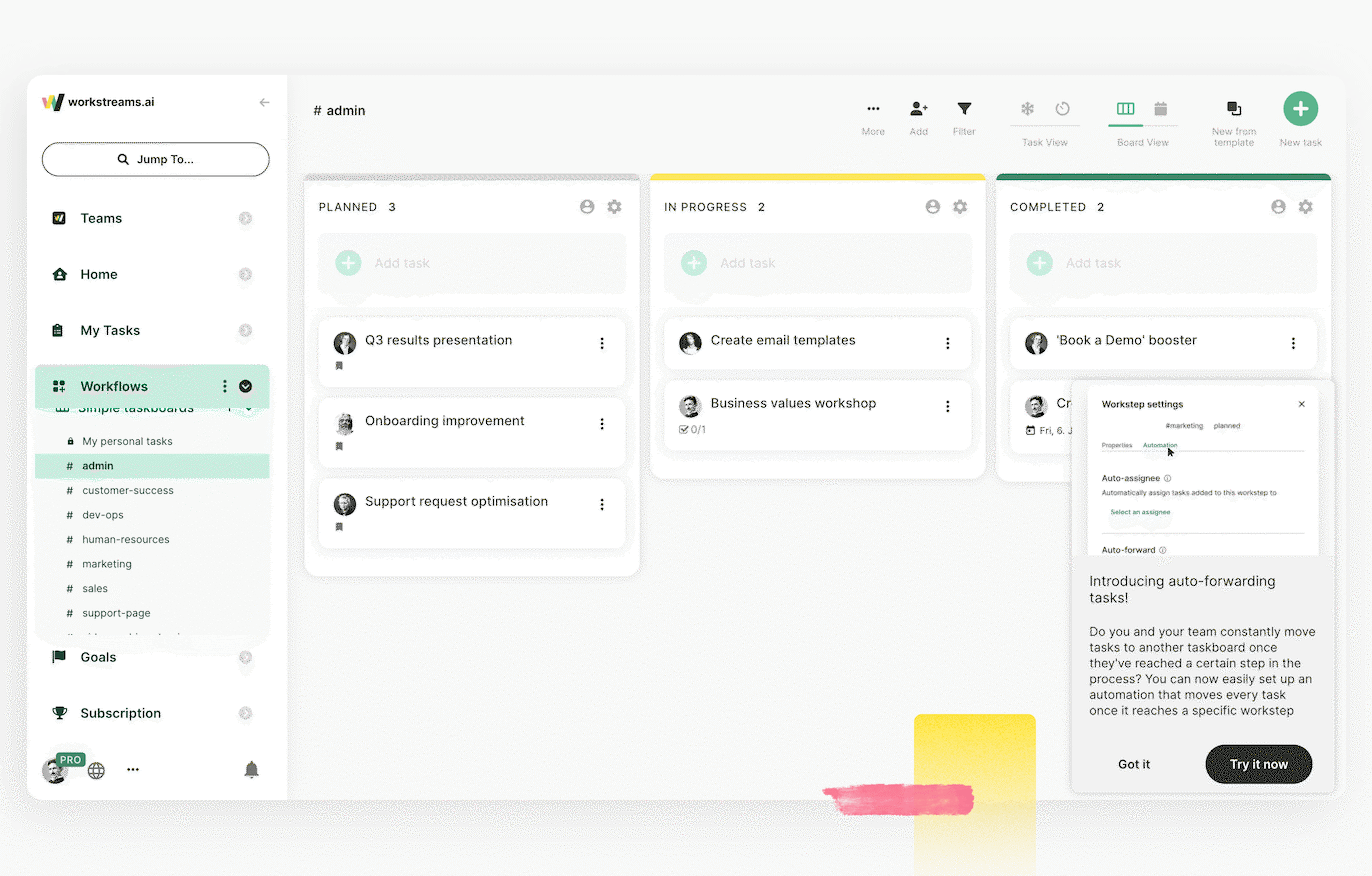
Successful workflow optimization requires using proper tools. Workflow software will help you to reduce human errors and eliminate insufficient processes.
For example, workstreams.ai is a team management software that allows you to create automated workflows and add step-specific subtasks. It helps you visually organize multiple workflows and keep them neat.
workstreams.ai has a time allocation feature that allows you to create better-optimized workflows. It records tasks and accurately measures task duration. Knowing exactly how long each step takes, the app provides a realistic timeline of your process.
Once the timeline is ready, you can distribute tasks across team members. Then workstreams.ai again tracks every step for future data.

Frozen tasks is another impressive workstreams.ai feature that can dramatically improve your workflow management and help you create more successful projects. It identifies inactive tasks that are irrelevant and clutter your space.
When the Frozen task view is on, each card shows how long it last interacted with. After thirty days, a snowflake icon marks the task as frozen. It helps you notice tasks that should be archived or require attention.
Overall, workstreams.ai is a feature-rich app that helps you sharpen your business process.
The key benefits of using worksteams.ai for workflow optimization include:
- Streamlined workflows: workstreams.ai allows you to create workflows and easily manage them. With its intuitive drag-and-drop interface, you can create custom workflows that meet the unique needs of your team.
- Collaboration: workstreams.ai provides a centralized platform for team collaboration. It allows team members to work together on tasks and projects in real time. It promotes better communication, eliminates unnecessary processes, and ensures everyone is on the same page.
- Integration: workstreams.ai integrates with popular tools and platforms such as Slack, Microsoft Teams, and Trello, allowing you to manage all your tasks and projects from a single location.
- Automation: workstreams.ai automates repetitive tasks and processes, reducing the need for manual data entry and freeing up time for more strategic work.
- Tracking and Reporting: workstreams.ai provides detailed analytics and reporting. It gives you insights into the performance of your project management and allows you to identify inefficient workflows.
- Scalability: workstreams.ai is scalable, making it suitable for small teams and large enterprises. As your business grows, workstreams.ai can grow with you, adapting to your changing needs.
Using workstreams.ai as your project management tool for improving workflows will boost your team’s productivity and help your company remain competitive.
3. Optimize your workflow
How exactly can workstreams.ai help you optimize workflows? Here are four examples of processes that it can improve:
Procurement
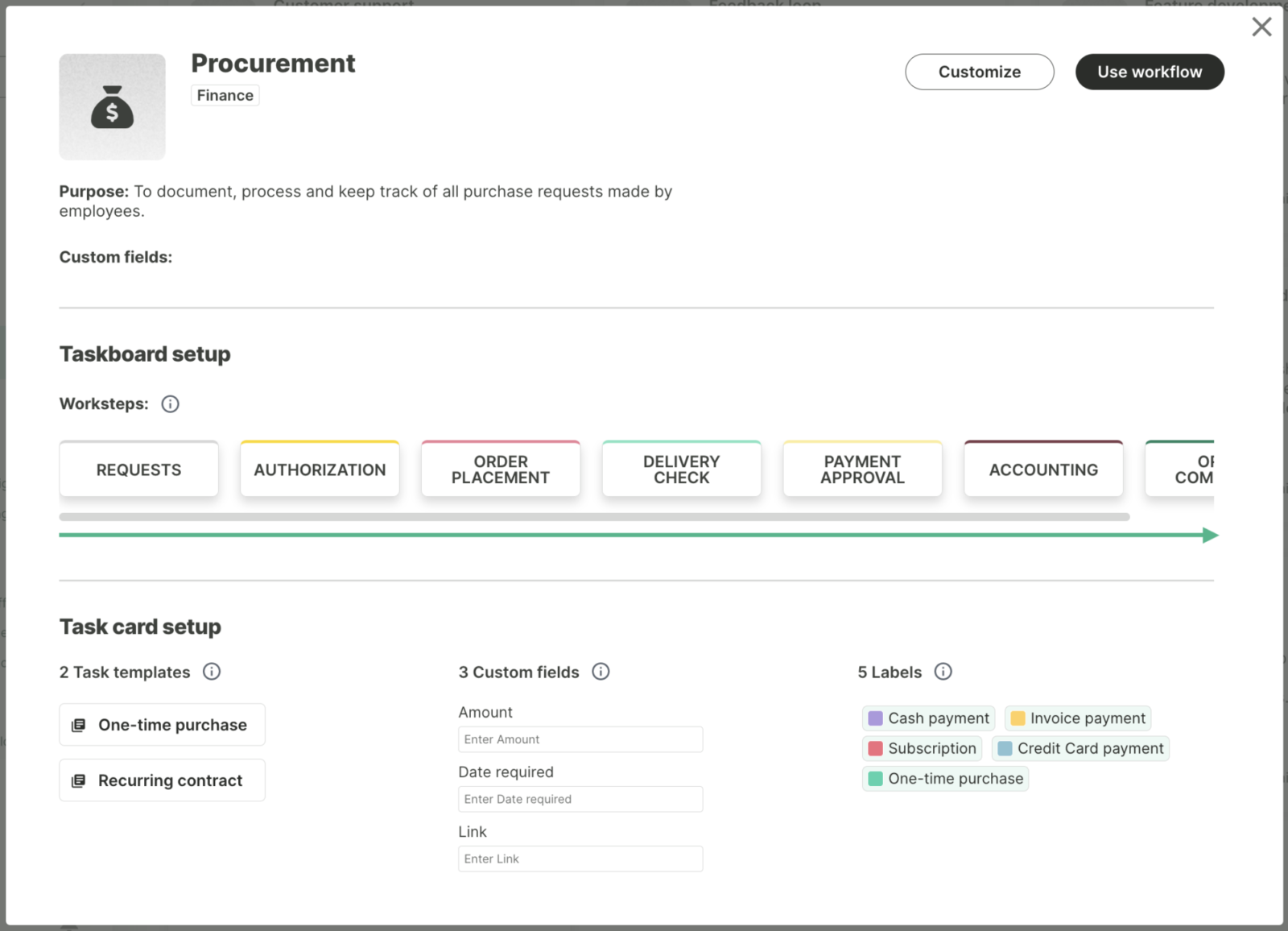
Paying and accounting for goods is a vital process for all companies. Nevertheless, most procurement software can be too complicated for SMEs. It is where workstreams.ai can be beneficial.
workstreams.ai is tailored to deliver precisely what you need without any superfluous elements. The procurement workflow comprises all the necessary features to ensure that goods move smoothly through each stage, from request to account reconciliation.
Hiring
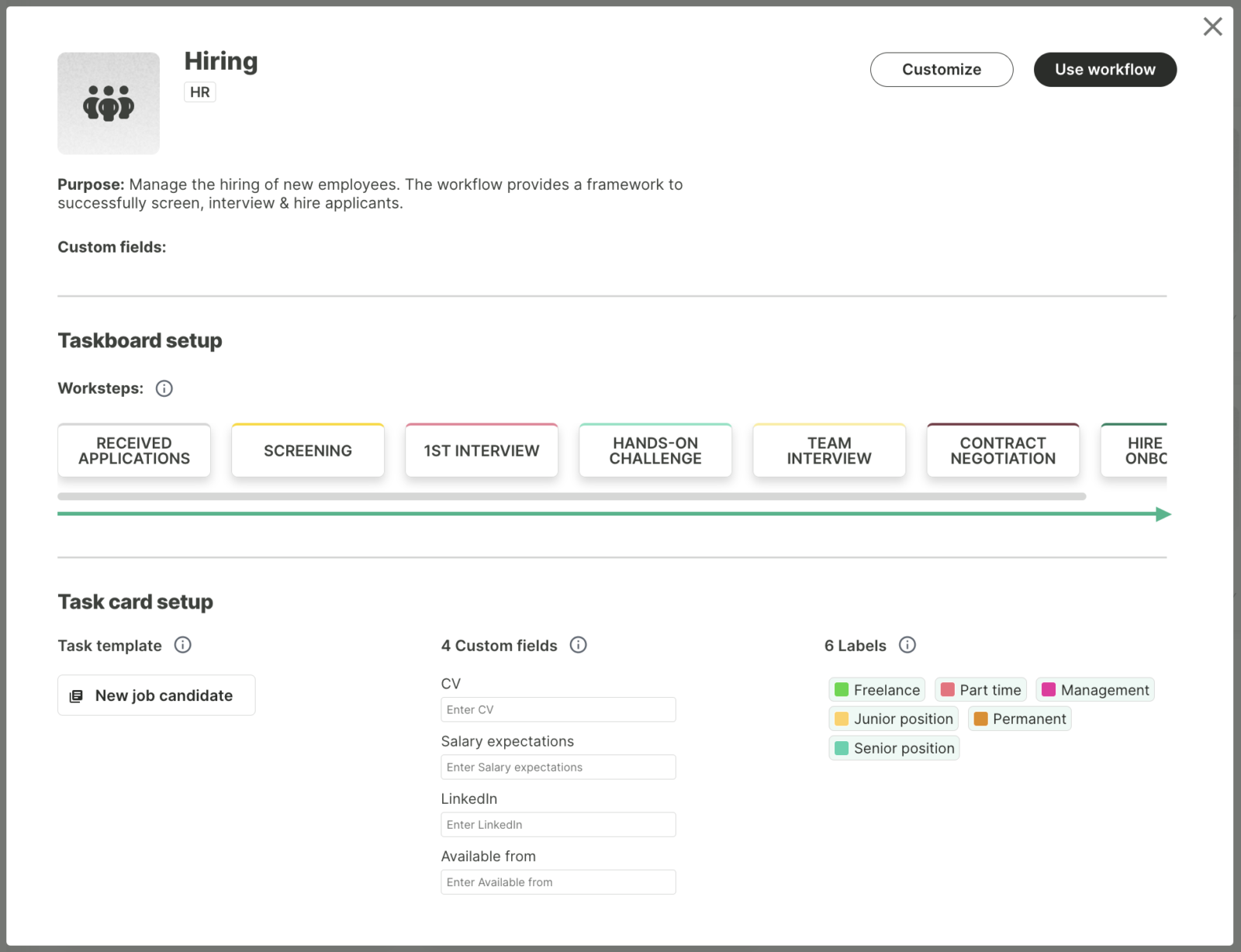
The HR sector is full of specialized SaaS platforms and choosing the best one for your organization can be challenging. Nonetheless, the most critical factor is hiring the right individuals.
An efficient hiring process revolves around a streamlined workflow that centralizes all applications and sets specific stages for reviews, initial screenings, interviews, and eventual employee onboarding.
Our Hiring workflow provides hiring managers with all the essential resources, such as handoffs, CV storage, and work step ownership, to locate the ideal candidate for the position.
Feedback Loop
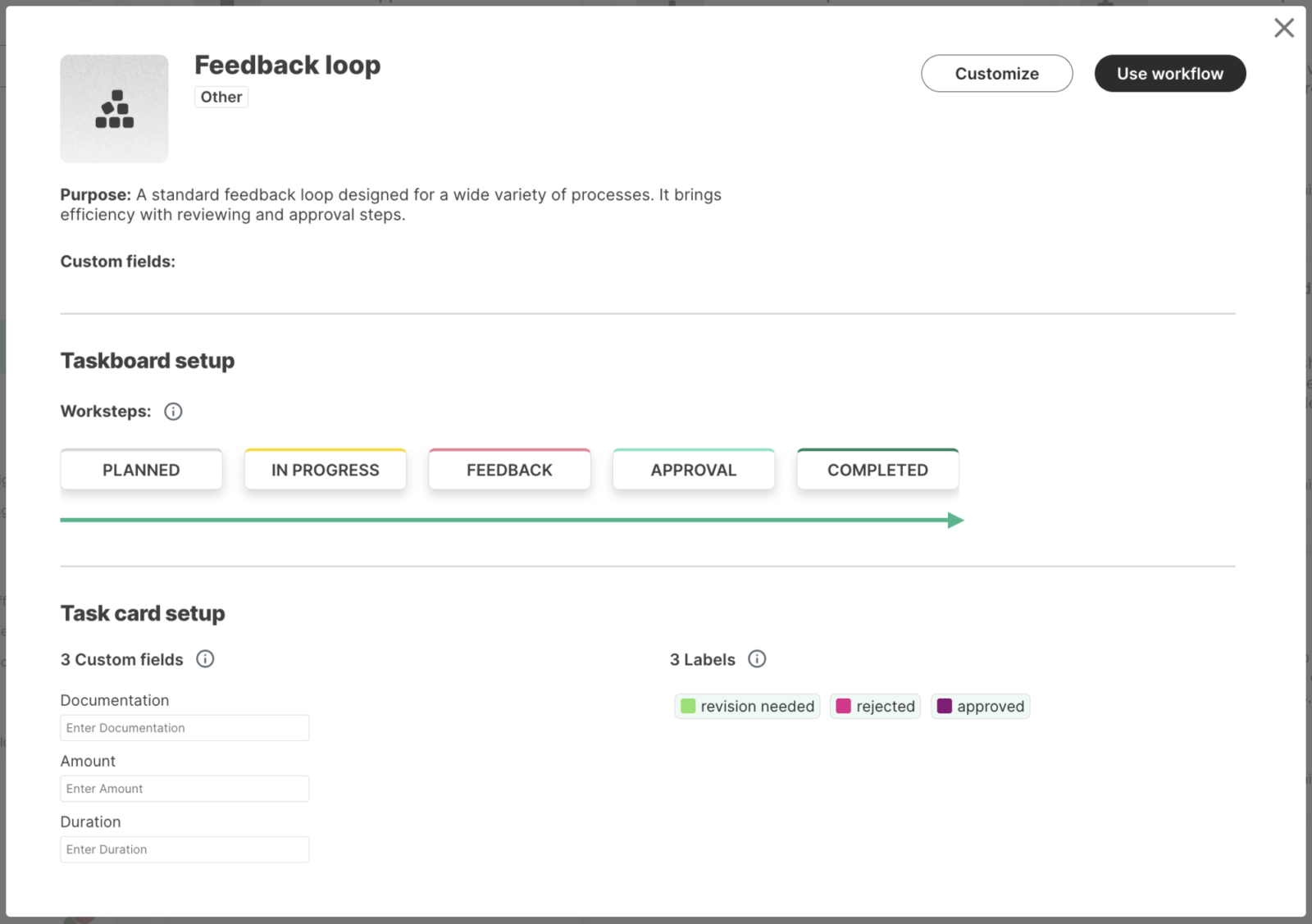
Requesting feedback and reviews is common practice in startups and small-to-medium-sized enterprise settings. However, this process can be disordered and uneven, resulting in missed chances for enhancement.
workstreams.ai establishes a standard approach to the feedback process, ensuring that everyone within your organization follows the same procedures and conducts the same actions whenever feedback is necessary for a specific task. Our feedback loop workflow simplifies the feedback cycle, guaranteeing that no task is overlooked or disregarded without obtaining the necessary feedback.
Time-off requests
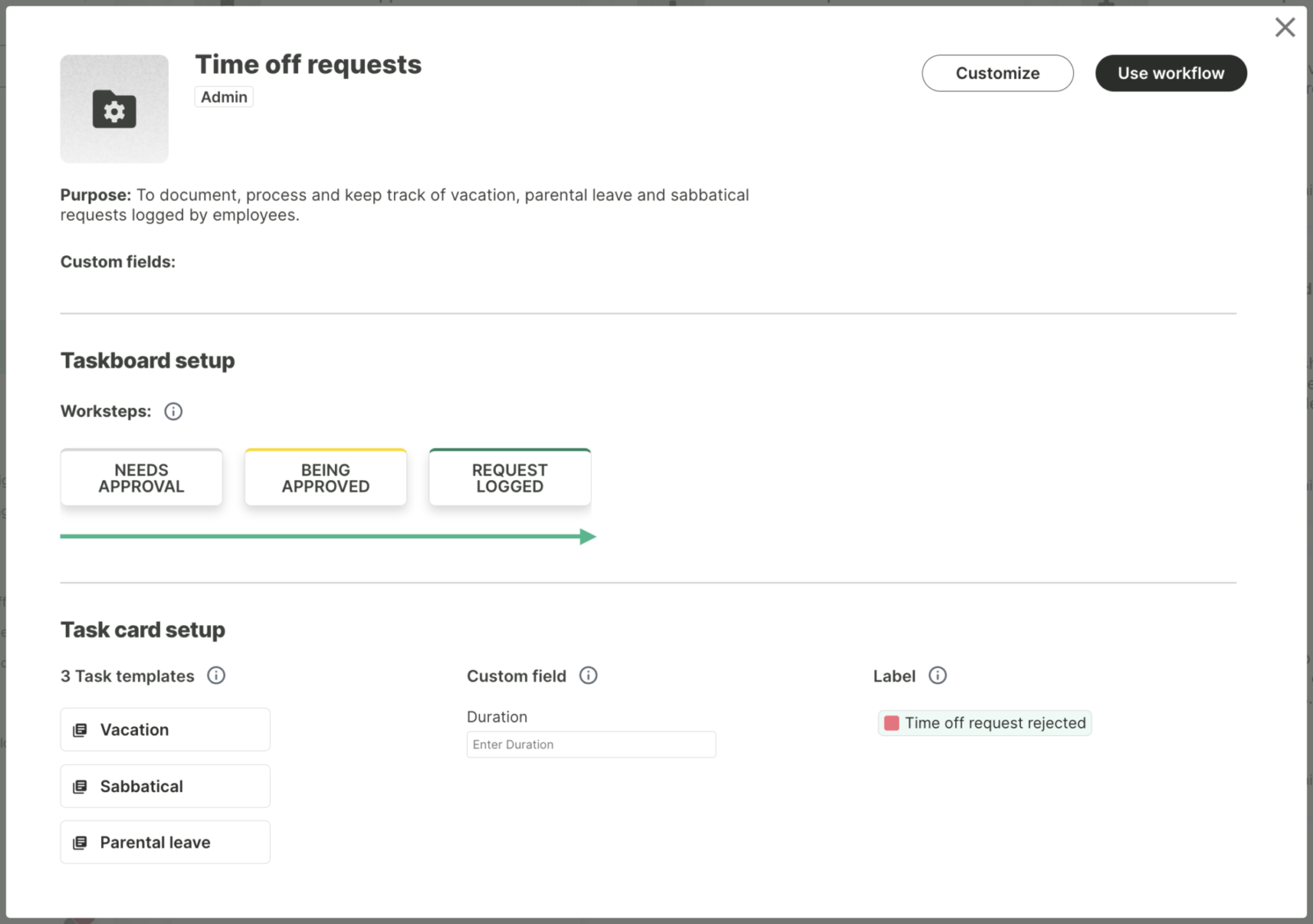
Overseeing holiday time, sick leave, sabbaticals, and parental leaves demands a review process. However, specialized HR tools can be intricate and expensive.
workstreams.ai offers a more straightforward alternative. It allows you to incorporate a workflow from the app you already use for other business processes.
Our Time-off request workflow simplifies the process of requesting time off for your team, allows team leads to examine the requests, and enables HR teams to update calendars, log the request, and ensure to document and archive everything.
For more use cases, check out our post, where we talk about seven workflow examples for SMEs.
4. Integrate your workflow with other apps
Workflow management becomes easier with app integrations, allowing you to use joint possibilities of different software solutions. workstreams.ai enables you to effectively optimize your workflows with such integration options as:
Slack
The integration with Slack allows using shared channels to facilitate collaboration with external individuals or companies on a shared task board. This feature is also beneficial for displaying progress on necessary deliverables for key stakeholders like clients, partners, or investors.
See also: Slack project management
Calendars
workstreams.ai integrates with Google Calendar or Outlook Calendar. It also has its in-app calendar.
Integrating workstreams.ai with your calendar is an excellent approach to enhancing your awareness of due dates and making it more apparent to others when you complete assigned tasks. It is also a helpful way to plan and monitor your progress, ensuring you know what to work on next.
Trello
workstreams.ai and Trello integration simplifies the process of automatically importing Trello tasks, whether you're transitioning away from Trello or simply need to make certain tasks visible on your workstreams.ai taskboard.
Microsoft Teams
Microsoft Teams integration allows for streamlined communication and task management. You can create, assign, and track tasks directly from within Microsoft Teams, making tracing progress easier and staying on top of deadlines.
5. Test your workflow and keep optimizing
Use workstreams.ai to test your workflow and see how it performs in real-world scenarios. It will help you identify any issues you should address. Continuously monitor the performance of your workflow using workstreams.ai workflow analysis to ensure it continues to meet your objectives and KPIs. Adjust as necessary to keep it optimized.
Conclusion
Optimizing your SME's workflows is crucial for maximizing efficiency, productivity, and profitability. Following the steps outlined in this article can free up valuable time and resources for more critical business activities.
Workflow optimization software like workstreams.ai can help you reduce human error, automate routine tasks, and eliminate inefficient processes to ensure your SME runs at its full potential. Sign up for the workstreams.ai service to get things done with automation, transparent communication, and focus.
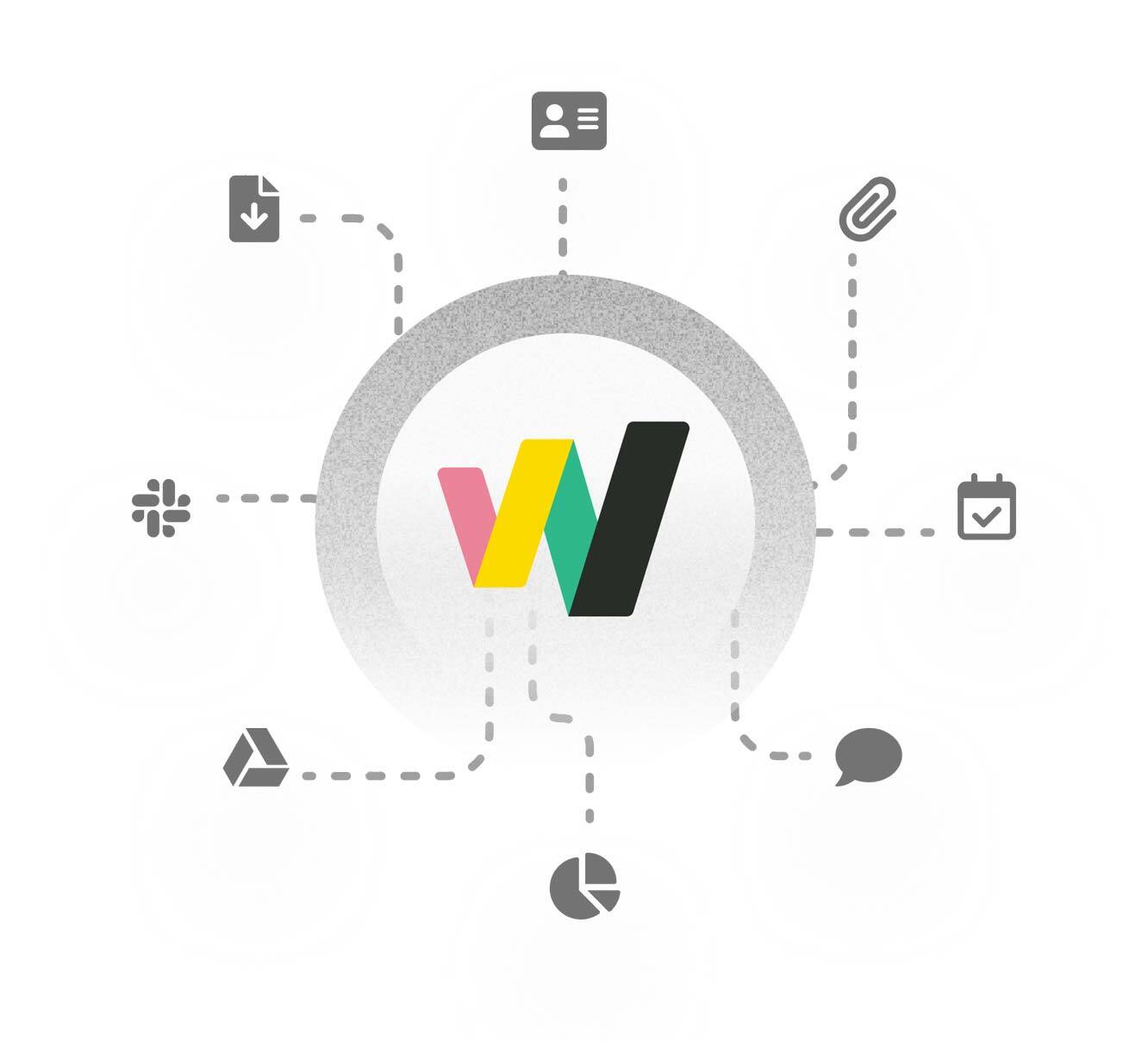
FAQs
What is project workflow optimization?
Project workflow optimization involves evaluating and refining the process of completing a project. It aims to enhance efficiency, productivity, and quality of outcomes. Workflow optimization entails analyzing the steps involved in a project, identifying bottlenecks, redundancies, and inefficiencies, and reorganizing or eliminating unnecessary steps to streamline processes.
A workflow optimization process can include eliminating waste, automating manual processes, delegating responsibilities, clarifying communication channels, and implementing best practices. The ultimate goal is to optimize the project workflow to reduce costs, increase productivity, improve project outcomes, and meet project goals within the set timeframe.
What is an optimal workflow?
An optimal workflow is a process designed and structured to be as efficient and effective as possible. It is a sequence of tasks that is streamlined to achieve the desired outcome with minimal waste, delays, and errors.
An optimal workflow involves:
- Breaking down complex tasks into smaller, more manageable steps.
- Assigning tasks to the appropriate individuals.
- Ensuring that all steps are completed in the correct order.
How do you improve a workflow?
Here are some workflow optimization techniques:
- Analyze your existing workflows. Look for any process deficiencies and identify bottlenecks. You can do it by conducting a workflow audit, reviewing a workflow diagram, and gathering feedback from team members.
- Define the goals of workflow optimization. It can include simplifying complex processes, increasing productivity, facilitating employee training, or streamlining documentation processes.
- Develop a standardized strategy for each workflow to ensure consistency and minimize errors. It can include creating process maps and documentation.
- Automate repetitive and time-consuming tasks to reduce manual labor and improve efficiency. It can involve using workflow optimization software like workstreams.ai.
- Regularly review and evaluate the workflow to identify areas for improvement.
How do you optimize a team workflow?
One of the most helpful workflow optimization tips for teams is to deploy software like workstreams.ai.to improve project management workflow. workstreams.ai can automate repetitive tasks, standardize processes, and improve communication and collaboration.
Features such as customizable workflows, task assignments, and real-time progress tracking can help your team work more efficiently, leading to increased productivity, better performance, and higher-quality output.

